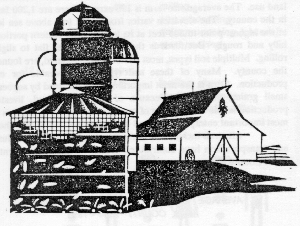 Crop Insurance
Crop Insurance
 Commodity Purchase and Donation
Commodity Purchase and Donation

These components were designed to work together to provide a system of maintaining a safe and affordable food supply for the American consumer, while also keeping prices reasonable and consistent for farmers. They did this by providing income supports when market prices fell below basic costs of production. Although supplying some degree of stability, this system created many problems. First, farmers did not like this type of government intervention. Also, many economists argued that these programs created market inefficiencies by keeping prices artificially low. It also worked against the family farmer, in many cases, because it tended to discourage diversification and crop rotation. Instead it provided disproportionate benefits to large-scale agriculture. The Federal Agricultural Improvement and Reform Act of 1996 will eliminate many of the former system's problems, yet will certainly present new challenges for the family farmer.Crop Insurance
Commodity Purchase and Donation
 E-Mail The Family Farm Project
E-Mail The Family Farm Project